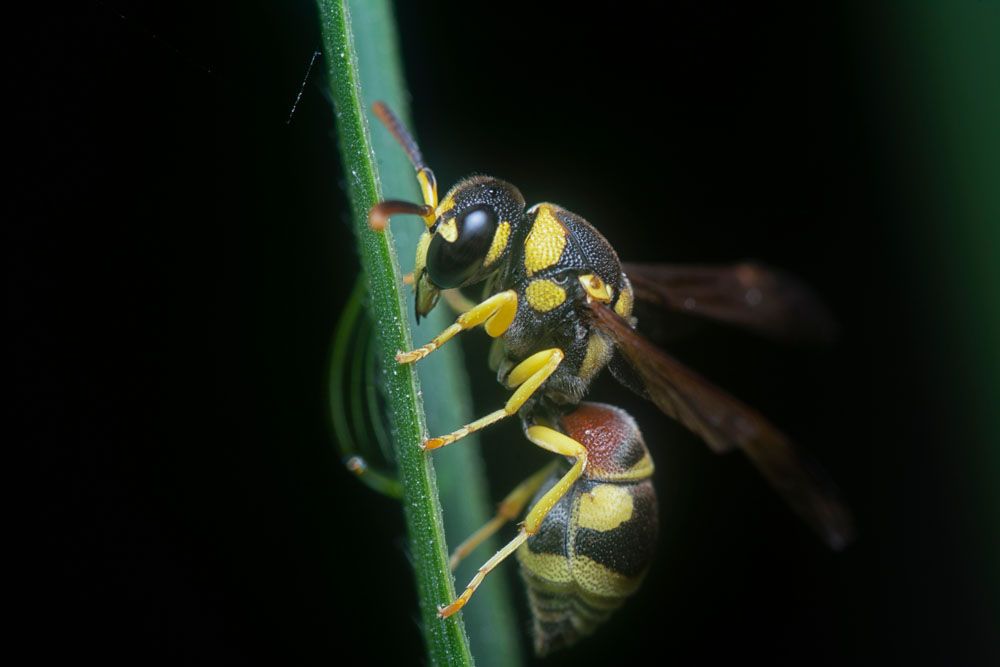
Yellowlegged Papper Wasp – Mischocyttarus flavitarsis
Yellow-Legged Paper Wasp
Scientific Name: Mischocyttarus flavitarsis
Common Name: Paper wasp, Yellow-legged paper wasp, Potter wasp, Western paper wasp
Appearance: Yellow-legged paper wasps have a long, slender black body with yellow stripes and yellow legs with a little black tint at the base. They can be easily confused with Polistes species, but the difference is that yellow legged paper wasps have a stalked abdomen (petiolate) while Polistes species have sessile abdomen. They have brownish antennae. They have wings folded longitudinally at rest. They often don’t bite until they get disturbed.
Host Plants or Food: Caterpillars, Praying Mantis, Flies, Nectar, Honey Dew
Territory: Western North America
Mode of Damage: It does not damage the plants and preys on the caterpillars; therefore, it is considered a beneficial garden insect.
Habits and Life History:
Yellow legged paper wasps are found everywhere around us. They can be in the forest, gardens, field crops, homes, old buildings, etc.
Like ants and other wasps, western paper wasps are also eusocial. They have one group of female queens and males and another group of female workers.
When the hibernation period gets over, mating occurs, and the female starts building the nest to lay the eggs. The queen usually initiates the nest building as she has to lay the eggs.
If two queens are laying the eggs in the nest, the dominant one will eat the eggs laid by the other.
The eggs begin to hatch and develop into larvae in 20 days, and then larvae take another 20 days to develop into pupae, and pupa finally develops into adult wasp after 20 more days. It means eggs take almost 60 days to develop into an adult.
The larvae feed on the pre-chewed caterpillar that has been brought by their mother into the nest.
The female adults, after emerging, work to enlarge the nest, collect the food and defend the nest from predators.
As the temperature drops and winter starts approaching, the females leave the nest and start seeking shelter to hibernate.
They usually seek shelter in loose bark, rocks, logs, etc.
